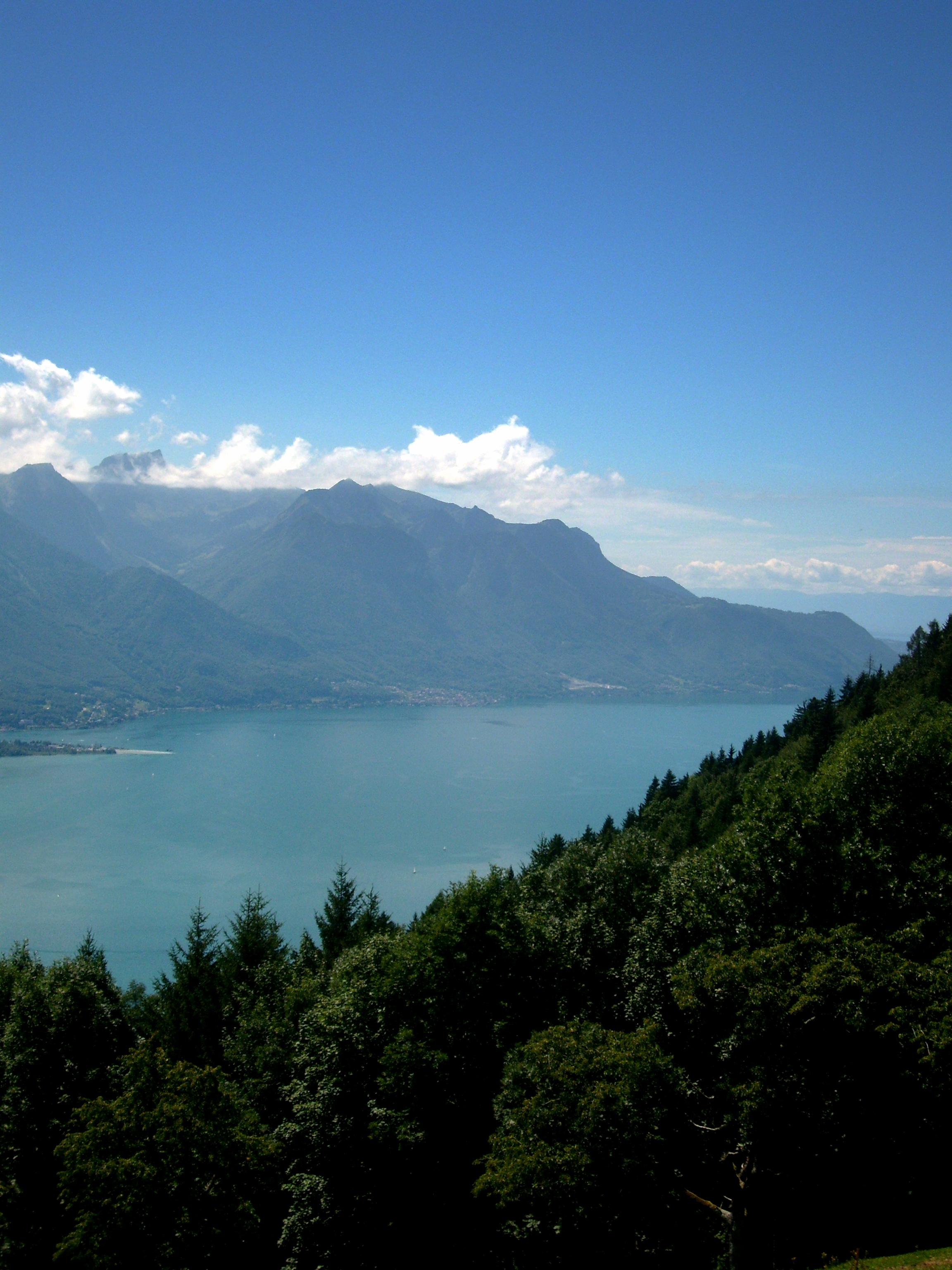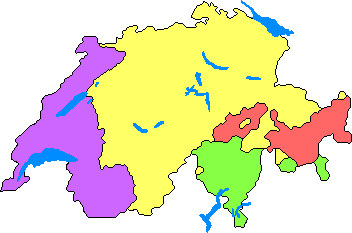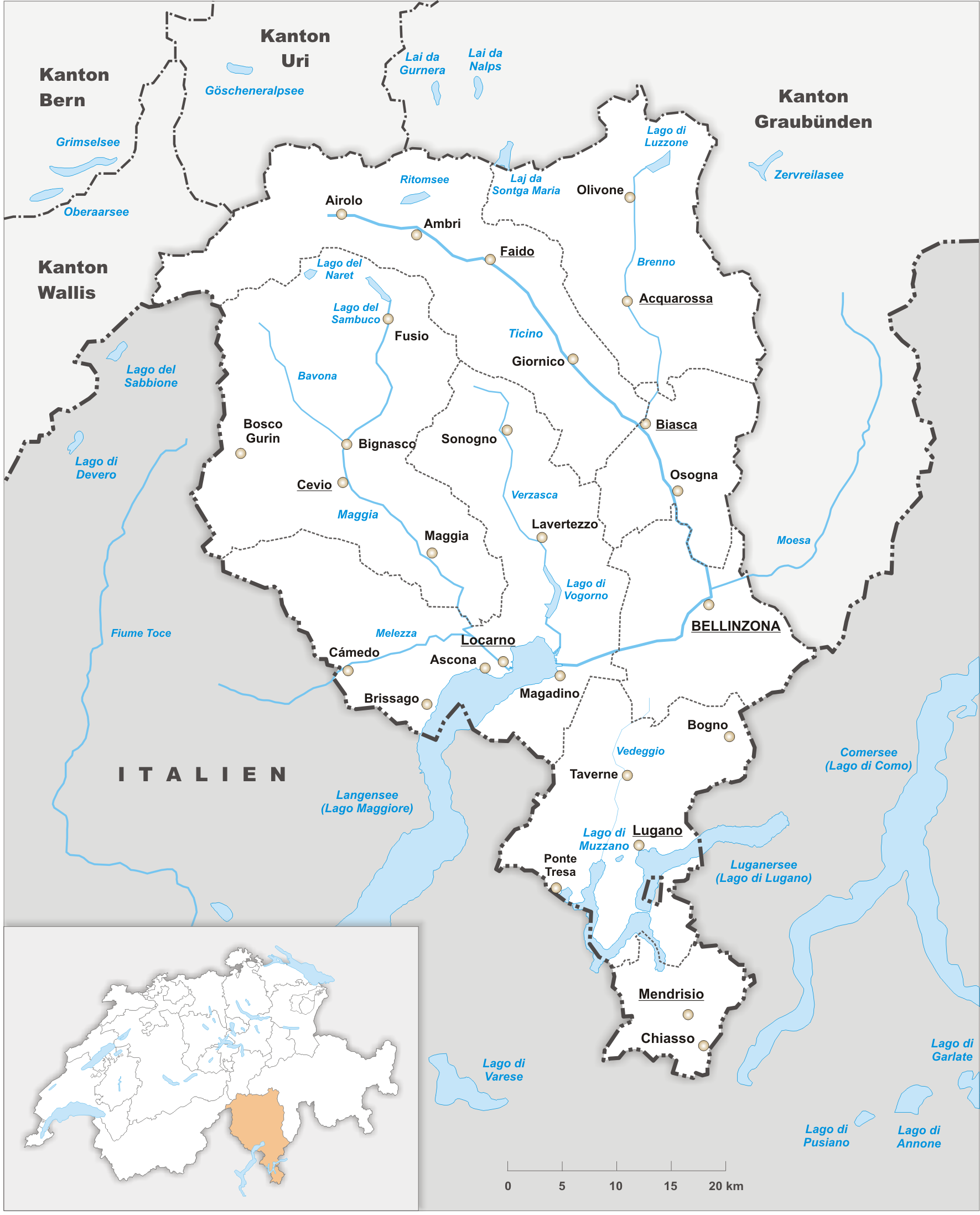|
Suisse Romande
Romandy ( or ; Arpitan: ''Romandia'')Before World War I, the term French Switzerland () waalso used ( or , , ) is the French-speaking historical and cultural region of Switzerland. In 2020, about 2 million people, or 22.8% of the Swiss population, lived in Romandy. The majority of the population lives in the western part of the country, especially the region along Lake Geneva, connecting Geneva, Vaud, and the Lower Valais. French is the sole official language in four Swiss cantons: Geneva, Vaud, Neuchâtel, and Jura. Additionally, French and German have co-official status in three cantons: Fribourg/Freiburg, Valais/Wallis, and Berne/Bern. Name The adjective ' (feminine ') is a regional dialectal variant of ' (modern French ', i.e. "Roman"); in Old French used as a term for the Gallo-Romance vernaculars. Use of the adjective ' (with its unetymological final ') in reference to the Franco-Provençal dialects can be traced to the 15th century; it is recorded, as ', in ... [...More Info...] [...Related Items...] OR: [Wikipedia] [Google] [Baidu] |
Switzerland
Switzerland, officially the Swiss Confederation, is a landlocked country located in west-central Europe. It is bordered by Italy to the south, France to the west, Germany to the north, and Austria and Liechtenstein to the east. Switzerland is geographically divided among the Swiss Plateau, the Swiss Alps, Alps and the Jura Mountains, Jura; the Alps occupy the greater part of the territory, whereas most of the country's Demographics of Switzerland, 9 million people are concentrated on the plateau, which hosts List of cities in Switzerland, its largest cities and economic centres, including Zurich, Geneva, and Lausanne. Switzerland is a federal republic composed of Cantons of Switzerland, 26 cantons, with federal authorities based in Bern. It has four main linguistic and cultural regions: German, French, Italian and Romansh language, Romansh. Although most Swiss are German-speaking, national identity is fairly cohesive, being rooted in a common historical background, shared ... [...More Info...] [...Related Items...] OR: [Wikipedia] [Google] [Baidu] |
Lake Geneva
Lake Geneva is a deep lake on the north side of the Alps, shared between Switzerland and France. It is one of the List of largest lakes of Europe, largest lakes in Western Europe and the largest on the course of the Rhône. Sixty percent () of the lake belongs to Switzerland (the cantons of Vaud, Canton of Geneva, Geneva and Valais) and forty percent () to France (the department of Haute-Savoie). Name While the exact origins of the name are unknown, the name was in use during the time of Julius Caesar. comes from Ancient Greek () meaning "port's lake". In Medieval Latin it was known as , although this name was also used for Lausonius Lacus, a town or district on the lake, or ; the equivalent in Old French was . Following the rise of Geneva it became (translated into English as ''Lake Geneva''), but was the common name on all local maps and is the customary name in the French language. In contemporary English language, English, the name ''Lake Geneva'' has become predo ... [...More Info...] [...Related Items...] OR: [Wikipedia] [Google] [Baidu] |
Welsh Language
Welsh ( or ) is a Celtic languages, Celtic language of the Brittonic languages, Brittonic subgroup that is native to the Welsh people. Welsh is spoken natively in Wales by about 18% of the population, by some in England, and in (the Welsh colony in Chubut Province, Argentina). It is spoken by smaller numbers of people in Canada and the United States descended from Welsh immigrants, within their households (especially in Nova Scotia). Historically, it has also been known in English as "British", "Cambrian", "Cambric" and "Cymric". The Welsh Language (Wales) Measure 2011 gave the Welsh language official status in Wales. Welsh and English are ''de jure'' official languages of the Senedd (the Welsh parliament), with Welsh being the only ''de jure'' official language in any part of the United Kingdom, with English being merely ''de facto'' official. According to the 2021 United Kingdom census, 2021 census, the Welsh-speaking population of Wales aged three or older was 538,300 ( ... [...More Info...] [...Related Items...] OR: [Wikipedia] [Google] [Baidu] |
Swiss German
Swiss German (Standard German: , ,Because of the many different dialects, and because there is no #Conventions, defined orthography for any of them, many different spellings can be found. and others; ) is any of the Alemannic German, Alemannic dialects spoken in the German-speaking Switzerland, German-speaking part of Switzerland, and in some Alps, Alpine communities in Northern Italy bordering Switzerland. Occasionally, the Alemannic dialects spoken in other countries are grouped together with Swiss German as well, especially the dialects of Liechtenstein and Austrian Vorarlberg, which are closely associated to Switzerland's. Linguistically, Alemannic is divided into Low Alemannic German, Low, High Alemannic German, High and Highest Alemannic German, Highest Alemannic, varieties all of which are spoken both inside and outside Switzerland. The only exception within German-speaking Switzerland is the municipality of Samnaun, where a Bavarian language, Bavarian dialect is spoken. ... [...More Info...] [...Related Items...] OR: [Wikipedia] [Google] [Baidu] |
Grisons
The Grisons (; ) or Graubünden (),Names include: * ; *Romansh language, Romansh: ** ** ** ** ** **; * ; * ; * . See also list of European regions with alternative names#G, other names. more formally the Canton of the Grisons or the Canton of Graubünden, is one of the twenty-six cantons of Switzerland, cantons of Switzerland. It has eleven districts, and its capital is Chur. The German language, German name of the canton, , translates as the "Grey Leagues", referring to the canton's origin in three local alliances, the Three Leagues. The other native names also refer to the Grey League: in Sutsilvan, in the other forms of Romansh language, Romansh, and in Italian language, Italian. is the Latin name for the area. The Alpine ibex is the canton's heraldic symbol. The largest and easternmost canton of Switzerland, it is also one of the three large southern Alps, Alpine cantons, along with Valais and Ticino. It is the most diverse canton in terms of natural and cultural ge ... [...More Info...] [...Related Items...] OR: [Wikipedia] [Google] [Baidu] |
Ticino
Ticino ( ), sometimes Tessin (), officially the Republic and Canton of Ticino or less formally the Canton of Ticino, is one of the Canton of Switzerland, 26 cantons forming the Switzerland, Swiss Confederation. It is composed of eight districts and its capital city is Bellinzona. It is also traditionally divided into the Sopraceneri and the Sottoceneri, respectively north and south of Monte Ceneri. Ticino is the southernmost canton of Switzerland. It is one of the three large southern Alps, Alpine cantons, along with Valais and the Grisons. However, unlike all other cantons, it lies almost entirely south of the Alps and has no natural access to the Swiss Plateau. Through the main crest of the Saint-Gotthard Massif, Gotthard and adjacent mountain ranges, it borders the canton of Valais to the northwest, the canton of Canton of Uri, Uri to the north and the canton of Grisons to the northeast; the latter canton being also the only one to share some borders with Ticino at the level ... [...More Info...] [...Related Items...] OR: [Wikipedia] [Google] [Baidu] |
Alemannic German
Alemannic, or rarely Alemannish (''Alemannisch'', ), is a group of High German dialects. The name derives from the ancient Germanic tribal confederation known as the Alemanni ("all men"). Distribution Alemannic dialects are spoken by approximately ten million people in several countries: * In Europe: ** Switzerland: all German-speaking parts of the country except Samnaun ** Germany: centre and south of Baden-Württemberg, Swabia, and certain districts of Bavaria ** Austria: Vorarlberg, Reutte District of Tyrol ** Liechtenstein ** France: Alsace region ( Alsatian dialect) and in some villages of the Phalsbourg county, in Lorraine ** Italy: Gressoney-La-Trinité, Gressoney-Saint-Jean, Issime, Alagna Valsesia, Rimella and Formazza, in some other villages almost extinct *Outside Europe: ** United States: Allen and Adams County, Indiana, by the Amish there and also in their daughter settlements in Indiana and other U.S. states. ** Venezuela: Colonia Tovar ( Colonia ... [...More Info...] [...Related Items...] OR: [Wikipedia] [Google] [Baidu] |
Mont-Terrible
Mont-Terrible () was a department of the First French Republic, with its seat at Porrentruy. The Mont Terrible for which the department was named is now known as , a peak of near Courgenay (now in the canton of Jura, Switzerland). The toponym of was formed by popular etymology from an earlier Frainc-Comtou ''Mont Tairi'', from "arid, dry". The department was created in 1793 with the annexation of the short-lived Rauracian Republic, which had been created in December 1792 from the imperial part of the Prince-Bishopric of Basel. In 1797, the former Württemberg-owned Principality of Montbéliard, which had previously been given to Haute-Saône, was reattached to Mont-Terrible, together with the remaining Swiss part of the Bishopric of Basel after the French attack to the Elvetic nation. The department was abolished in 1800. Its territory was annexed to the Haut-Rhin, within which it formed the two arrondissements of Delémont and Porrentruy. In 1815, the territory that ... [...More Info...] [...Related Items...] OR: [Wikipedia] [Google] [Baidu] |
Simplon (department)
Simplon () was a Departments of France, department of the First French Empire. It was named after the Simplon Pass (). It was formed in 1810, when the Republic of Valais was annexed by France. Its territory corresponded with that of the present-day Switzerland, Swiss canton of Valais. The Prefectures in France, chef-lieu of the department was Sion, Switzerland, Sion. The department was subdivided into the following three arrondissements and canton (administrative division), cantons:Almanach Impérial an bissextil MDCCCXII p. 469-470, accessed in Gallica 31 July 2013 * Sion: Hérémence, Leuk District, Loèche, Sierre District, Sierre and Sion District, Sion. * Brigue: Brig District, Brigue, Goms District, Conches, Mörel, Switzerland, Mœrel, Raron (district), Rarogne and Visp District, Viège. * ... [...More Info...] [...Related Items...] OR: [Wikipedia] [Google] [Baidu] |
Léman (department)
Léman () was a department of the French First Republic and French First Empire. Its name came from the French name of Lake Geneva, ''Lac Léman''. It was formed in 1798, when the Republic of Geneva was annexed by the French Republic. Léman also included districts that were previously part of the departments of Mont-Blanc (northern Savoy) and Ain (the Pays de Gex). Its territory corresponded with the present Swiss canton of Geneva and parts of the present French departments of Ain and Haute-Savoie. The Chef-lieu of the department was Geneva. The department was subdivided into the following three arrondissements and cantons: * Genève: Carouge, Chêne-Thônex, Collonge, Frangy, Genève (3 cantons), Gex, Reignier and Saint-Julien. * Bonneville: Bonneville, Chamonix, Cluses, Megève, La Roche, Sallanches, Samoëns, Taninges and Viuz-en-Sallaz. * Thonon: Douvaine, Évian, Saint-Jean-d'Aulps and Thonon. After the final defeat of Napoleon in 1815, the former Re ... [...More Info...] [...Related Items...] OR: [Wikipedia] [Google] [Baidu] |
Helvetic Republic
The Helvetic Republic (; ; ) was a sister republic of France that existed between 1798 and 1803, during the French Revolutionary Wars. It was created following the French invasion and the consequent dissolution of the Old Swiss Confederacy, marking the end of the ''ancien régime'' in Switzerland. Throughout its existence, the republic incorporated most of the territory of modern Switzerland, excluding the cantons of Geneva and Neuchâtel and the old Prince-Bishopric of Basel. The Swiss Confederacy, which until then had consisted of self-governing cantons united by a loose military alliance (and ruling over subject territories such as Vaud), was invaded by the French Revolutionary Army and turned into an ally known as the "Helvetic Republic". The interference with localism and traditional liberties was deeply resented, although some modernizing reforms took place. Resistance was strongest in the more traditional Catholic cantons, with armed uprisings breaking out in spring ... [...More Info...] [...Related Items...] OR: [Wikipedia] [Google] [Baidu] |
Radio Télévision Suisse
The Radio Télévision Suisse (; "Swiss Radio Television"), shortened to RTS, is a subsidiary of the Swiss Broadcasting Corporation (SRG SSR), operating in French-speaking Switzerland. It was created on 1 January 2010 by a merger of Radio Suisse Romande (RSR) and Télévision Suisse Romande (TSR). History The first evening programme to be broadcast in colour on Télévision suisse romande was aired in 1968. The station has been accused of multiple cases of sexual harassment in recent years, including accusations against news personality Darius Rochebin. Future While keeping its headquarters in Geneva, Radio Télévision Suisse moved its Lausanne-based radio headquarters to a new building on the Lausanne campus in 2020. [...More Info...] [...Related Items...] OR: [Wikipedia] [Google] [Baidu] |





